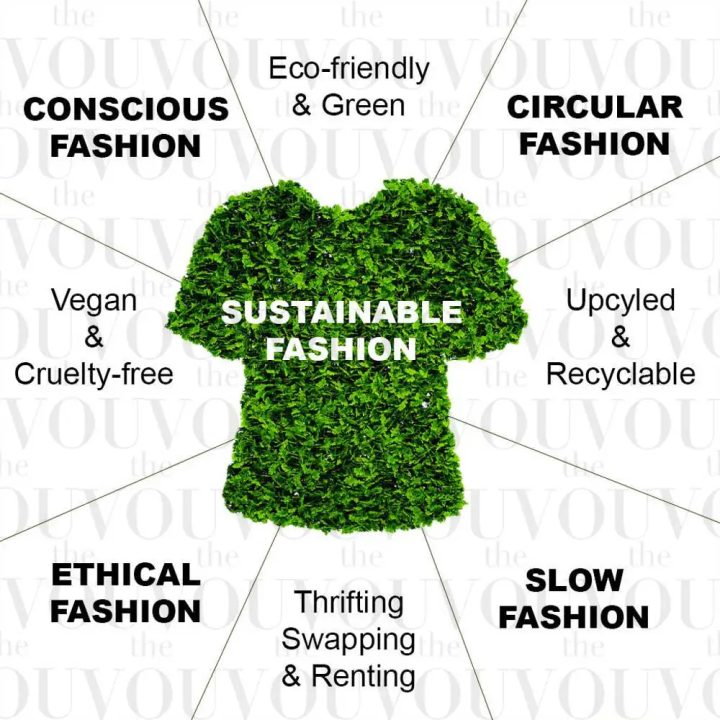Find Cape Town Sustainable Fashion Boutiques and Brands
Find Cape Town Sustainable Fashion Boutiques and Brands
Blog Article
Keep Ahead of the Curve by Exploring Ingenious Style Fads
In a sector as dynamic as style, staying in advance entails even more than simply adhering to present patterns-- it demands an expedition of advancement. The merging of innovation and style declares a new age of customer involvement.

Embracing Smart Textiles
In the last few years, the apparel industry has experienced a transformative shift with the integration of clever textiles, a cutting-edge innovation that blends modern technology with textile. This advancement stands for not only a blend of visual appeals and performance but likewise a significant jump towards sustainability and personalization in style. Smart textiles, additionally referred to as e-textiles, embed sophisticated electronic devices such as sensors and conductive strings within the material, enabling garments to connect with the environment or the wearer.
These textiles are developed to keep track of physical specifications, such as heart rate or body temperature, offering real-time wellness analytics. Beyond health and wellness applications, smart textiles are additionally being made use of for adaptive apparel, which can transform color or pattern in feedback to ecological stimulations, therefore providing a dynamic fashion experience.
Furthermore, the development of energy-harvesting textiles that create power from motion or sunshine is leading the way for self-sufficient wearable modern technology. This innovation is interesting ecologically aware consumers and designers intending to decrease the ecological impact of style. As r & d in this area breakthrough, smart fabrics are anticipated to end up being significantly common, reshaping the landscape of modern style with their multifunctional capacities.
The Rise of 3D Printing
Transforming the manufacturing landscape, 3D printing has become a game-changer in the garment industry. This innovative innovation has actually made it possible for developers to press the borders of creative thinking, generating intricate and tailored garments that were previously inconceivable. By leveraging digital style and additive production, 3D printing assists in the creation of intricate geometries and patterns, permitting developers to experiment with brand-new appearances and frameworks.
A notable benefit of 3D printing in fashion is its capacity to produce on-demand, minimizing waste and reducing stock demands. This performance not just enhances production procedures but also permits fast prototyping, making it possible for designers to bring their visions to life in a shorter duration. In addition, 3D printing supports modification somewhat unparalleled by conventional techniques, supplying distinct styles and personalized fits tailored to individual customer preferences.
The increase of 3D printing has likewise democratized fashion, making it easily accessible to arising developers that can now produce top notch items without substantial financial investment in conventional production facilities. As modern technology remains to development, the fashion business is poised to harness the complete capacity of 3D printing, discovering new products and methods that will certainly redefine how fashion is developed and created.
Sustainable Style Developments
As the apparel industry comes to grips with the pushing demand for ecological responsibility, sustainable fashion innovations have arised at the forefront of transformative modification. The expanding understanding of ecological impact has actually sustained a change towards even more eco-conscious practices and materials. Designers and brands are now focusing on sustainability, including techniques that lessen waste and decrease carbon footprints.
One substantial development is the surge of circular fashion, which stresses recycling and Go Here upcycling to extend the lifecycle of garments. This approach not just lowers waste however likewise urges consumers to adopt a much more conscious approach to clothes consumption.
One more advancement depends on the adoption of innovative dyeing techniques that make use of waterless procedures or all-natural dyes, therefore decreasing the substantial amounts of water and chemicals traditionally made use of in fabric dyeing. In addition, advancements in biotechnology have resulted in the creation of lab-grown natural leather and textiles, providing cruelty-free and eco friendly options to traditional products. With these pioneering initiatives, the fashion business is making meaningful strides towards a much more lasting future.

Tech-Integrated Apparel
Tech-integrated clothing stands for an innovative fusion of fashion and technology, improving exactly how individuals communicate with their apparel. This innovative domain is noted by the inclusion of smart fabrics and embedded digital parts, improving both capability and aesthetic appeal. From fitness trackers embedded in sportswear to heated jackets controlled using smartphone apps, tech-integrated clothing provides customers extraordinary comfort and adaptability.
Introducing brands are driving this trend, concentrating on developing garments that react to ecological stimuli or customer commands. For instance, some garments can alter shade or pattern in response to temperature changes, while others integrate biometric sensors to monitor health metrics like heart rate or anxiety levels. The smooth integration of innovation into textiles additionally reaches environmental sustainability, with efforts to create self-cleaning materials or garments that get used to climate condition, thus decreasing the need for several layers.
Furthermore, the advent of wearable modern technology is not just restricted to clothing yet encompasses devices like watches and eyewear, further expanding the extent of tech-integrated fashion. As the market proceeds to innovate, the potential for personalization and personalization in apparel grows, using consumers unique, tech-enhanced style experiences that deal with their private requirements and choices.
Future of Virtual Fashion
Over the last few years, the future of virtual style has actually emerged as a transformative force within the market, leveraging advancements in electronic innovation to redefine just how style over here is produced, experienced, and taken in. By integrating increased fact (AR), virtual reality (VIRTUAL REALITY), and 3D design devices, developers can currently craft interactive and immersive experiences that go beyond typical fashion limits. Digital style enables the production of garments that exist only in electronic atmospheres, using countless opportunities for development without the constraints of physical manufacturing.
This electronic change not only presents opportunities for creative expression however likewise addresses sustainability concerns intrinsic in traditional style methods. Cape Town Sustainable Fashion. By getting rid of the requirement for physical sources, online style decreases waste and decreases carbon impacts. In addition, the rise of virtual style straightens with the enhancing consumer demand for unique and customized experiences, as online garments can be personalized and customized to find here private preferences with convenience

Verdict
The style industry's future lies in the assimilation of sustainable techniques and innovative innovations. Virtual fashion is positioned to redefine customer interactions.
In current years, the style industry has actually observed a transformative shift with the combination of wise fabrics, an advanced innovation that mixes modern technology with material.As the style sector grapples with the pressing requirement for environmental responsibility, lasting fashion technologies have actually emerged at the leading edge of transformative adjustment.In current years, the future of online style has arised as a transformative force within the industry, leveraging improvements in digital technology to redefine how fashion is developed, experienced, and consumed. The rise of digital style lines up with the increasing customer demand for one-of-a-kind and customized experiences, as online garments can be customized and tailored to individual choices with simplicity.
The fashion sector's future lies in the combination of lasting techniques and ingenious innovations.
Report this page